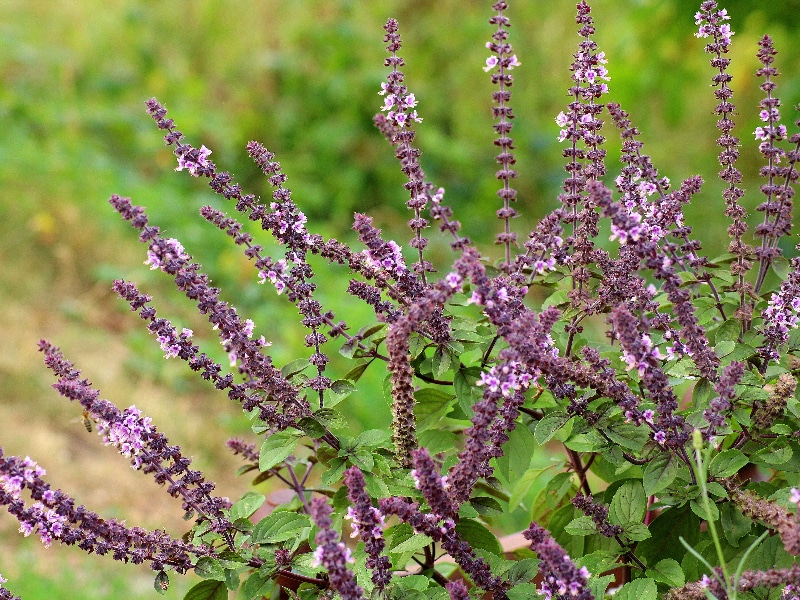There are three considerations to know how to deadhead salvia. More than the proper propagation technique, you want to learn the maintenance practices to keep these shrubs healthy and looking their best. You can also grow them in the greenhouse to control the environment and adjust according to the salvia variety you have.
Remember that there are plenty of salvia varieties, which also differ in requirements and management practices. Still, the extended blooming season of salvia makes it a worthy plant to research and grow. Knowing how to deadhead salvias properly will guarantee beautiful blooms and more pollinators in your garden.

How To Deadhead Salvia Easily
Preparation
Much like with deadheading other plants, you need to check your tools for deadheading salvia beforehand. Cleaning and sanitizing your tools is crucial to prevent infection and spread of pests and diseases among plants. Deadheading presents an opportunity for pathogens to get into your plants, and this could potentially kill your salvias.
What can you use for cleaning and sanitizing tools? Chlorine bleach and isopropyl alcohol are some of the easiest disinfectants to find for your tools. More so, don’t forget to sharpen your shears and knives because a clean cut will also ensure that you won’t damage your plants, while also keep them looking good.
Timing
More than maintenance and rejuvenation, deadheading salvia is an excellent way to ensure that these plants achieve their continuous blooming period. Remember that the beautiful salvia plants are well-loved for blooming for a long time, and the timing of deadheading is crucial to encourage this period. In general, the ideal time to deadhead salvias is in the middle of the summer.
This timing is optimal because salvia plants start blooming in the summer. You will notice the flowers fading by the middle of the season, so deadheading at this time can extend the flowering. This will also help the plants focus on producing more flowers because you have removed the dead blooms.
More so, deadheading in the middle of the season will prevent seed production. If you stop seeding, salvias can bloom continuously until winter. You can also consider cutting back your plants after the flowering season if you have perennial salvias to help them survive winter.
Method
The method of deadheading salvia itself is no different than with other plants. After you ensure that you have sharp and sanitized prunes or scissors, you can begin removing the dead and faded flowers. A useful tip for this method is finding the highest pair of leaves in a stalk.
You want to avoid the buds in these leaves because they will turn into new flowers later on. Use this as a guide on where to trim the stalk because you can cut above the buds. You can also apply this technique to the stalks without buds but bears dead flowers.
In general, you will notice that the flowers farthest from the salvia’s roots will die faster. Therefore, you can always check the top of your salvia during the middle of the growing season. Apply the technique discussed, and you should encourage the plants to create more blooms and extend flowering.
Caring For Salvia
Salvias are not only a beautiful addition to the garden. They also bring more pollinators in the garden, so maintaining them will help your other plants. You can consider growing them indoors to ensure that you won’t reduce their flowering.
Location
The stable conditions in the greenhouse should be supportive of your plant’s health and blooming. In general, the ideal location for salvias will depend on the type and variety you have. An area that receives full sun would be mainly best for flowering.
Water and feeding
A well-draining soil will keep salvias healthy but ensure that it is also retaining moisture. Be mindful during the summer to keep the plants hydrated but never overwater salvias. On the other hand, the good news is that salvias don’t require fertilizer to bloom well, but you can compost and mulch every spring.
Pruning
Besides deadheading throughout the season, you can prune salvias as well after they finished blooming. You can check the woody stems at the lower part of the plant and remove them. After the first killing frost, it’s also advisable to cut salvias back at an inch above the soil for maintenance.
Conclusion
It’s not typical to find a hardy plant that also bears beautiful flowers and attracts pollinators. Knowing how to deadhead salvia will extend the blooming period and fully encourage flowering to take advantage of this gorgeous plant. The method itself is straightforward, where you only need to be mindful of the tools, timing, and the process itself.
Use sanitized and sharp tools and begin removing the dead or faded flowers in the middle of the summer. You can cut above the new buds and check the plant’s top part as this is where flowers die the fastest. You can also prune the woody stems as part of your maintenance.
Overall, salvias are relatively care-free plants, but deadheading them will keep the flowers coming. You can also grow them in the greenhouse alongside other plants to encourage pollinators. You don’t need to fertilize salvias to influence blooming, but ensuring moisture with deadheading and pruning will keep them healthy for seasons to come.
